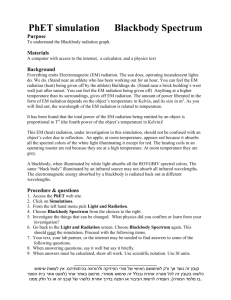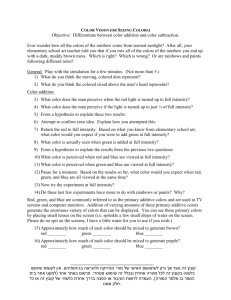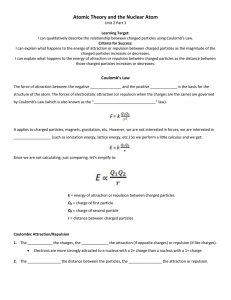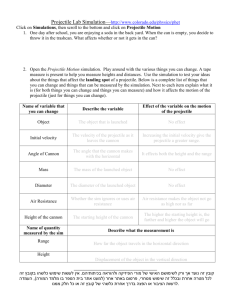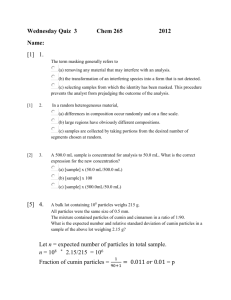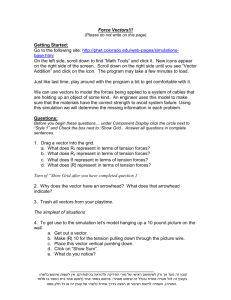Lesson plan for Rutherford Scattering: Building a model of the atom
advertisement
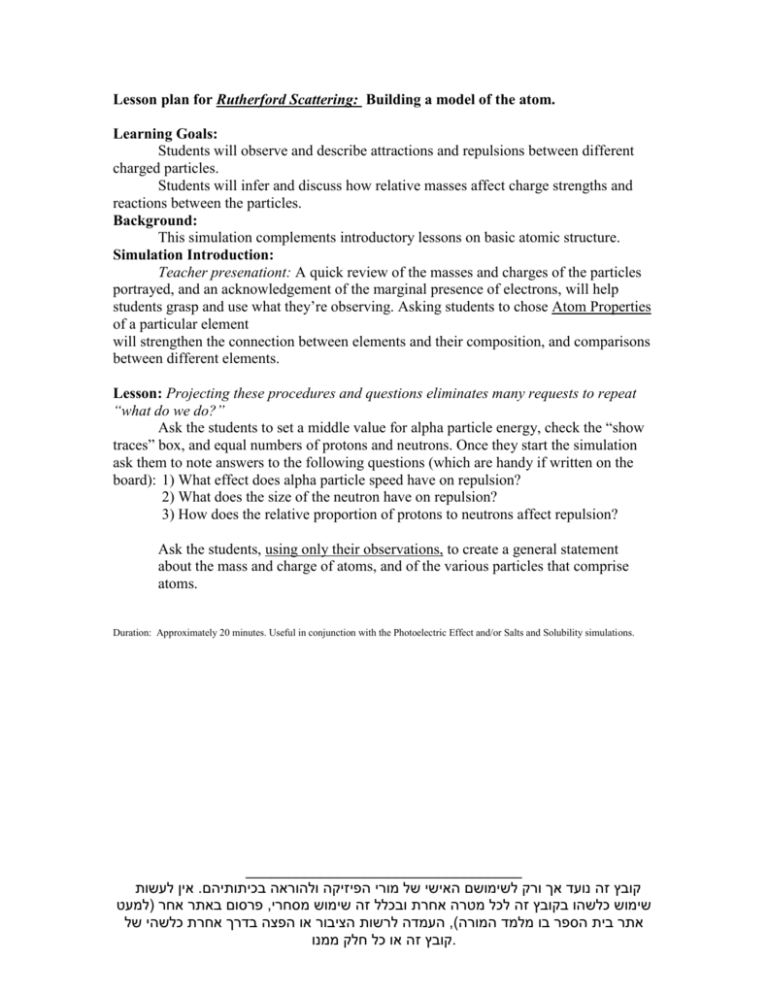
Lesson plan for Rutherford Scattering: Building a model of the atom. Learning Goals: Students will observe and describe attractions and repulsions between different charged particles. Students will infer and discuss how relative masses affect charge strengths and reactions between the particles. Background: This simulation complements introductory lessons on basic atomic structure. Simulation Introduction: Teacher presenationt: A quick review of the masses and charges of the particles portrayed, and an acknowledgement of the marginal presence of electrons, will help students grasp and use what they’re observing. Asking students to chose Atom Properties of a particular element will strengthen the connection between elements and their composition, and comparisons between different elements. Lesson: Projecting these procedures and questions eliminates many requests to repeat “what do we do?” Ask the students to set a middle value for alpha particle energy, check the “show traces” box, and equal numbers of protons and neutrons. Once they start the simulation ask them to note answers to the following questions (which are handy if written on the board): 1) What effect does alpha particle speed have on repulsion? 2) What does the size of the neutron have on repulsion? 3) How does the relative proportion of protons to neutrons affect repulsion? Ask the students, using only their observations, to create a general statement about the mass and charge of atoms, and of the various particles that comprise atoms. Duration: Approximately 20 minutes. Useful in conjunction with the Photoelectric Effect and/or Salts and Solubility simulations. _________________________________ אין לעשות.קובץ זה נועד אך ורק לשימושם האישי של מורי הפיזיקה ולהוראה בכיתותיהם פרסום באתר אחר (למעט,שימוש כלשהו בקובץ זה לכל מטרה אחרת ובכלל זה שימוש מסחרי העמדה לרשות הציבור או הפצה בדרך אחרת כלשהי של,)אתר בית הספר בו מלמד המורה קובץ זה או כל חלק ממנו.
